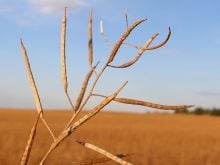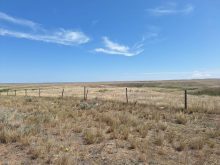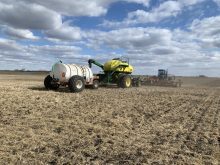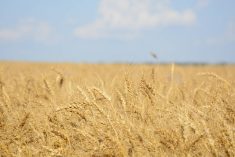Hay stocks running low | Cattle producers say pastures are under snow and alternate feed supplies are becoming scarce
The long, snowy winter of 2013 has put pressure on feed supplies for Saskatchewan cattle producers.
They say feeding has gone on way longer than expected and spring hasn’t come early enough to help out.
Brent Griffin, who has 700 head near Elbow, has been buying hay from a couple of smaller producers who sold their cows but still had supplies.
“We’re definitely running short,” he said. “We’re feeding full bore.”
So far, the cattle are fine, but he said they are pawing at the snow and it’s clear they would rather be out grazing. The winter grazing stock he had set aside is still under too much snow.
Read Also

Tick research from the University of Manitoba focuses on insects and testing
Manitoba researchers are looking into the effects of tick and fly disease in cattle.
“We can comfortably feed maybe to the end of the April,” he said mid-month. “We’re OK when the snow goes.”
In southeastern Saskatchewan near Whitewood, Ryan Beierbach said feeding has gone on longer than anyone expected.
“Part of it is everybody started feeding a month sooner than normal,” he said.
Recent record-setting cold temperatures meant the cows continued to eat at winter rates.
“They’re definitely not easing up on the hay,” Beierbach said.
As it warms up, that should change but feeding will have to continue because grazing is still a long way off.
Beierbach has also been able to buy hay fairly close to home at a reasonable price of four cents per pound. Truckers have told him that many producers are complaining about the hay shortage.
Griffin said the thousands of loads of hay that went to Ontario or the United States last fall, in retrospect, could have been sold at home during the winter no one saw coming.
Those sales coupled with poor hay crops the past couple of years in northern Saskatchewan mean there just isn’t hay available.
In his own case, alfalfa weevil decimated what should have been a bumper crop after good spring moisture.
“Our hay crop was very, very average,” he said.
Griffin said he worries about the producers who can’t find hay and don’t know what to do about it.
Beierbach added that hay quality could be a concern if producers have to buy bales that are two or three years old.
Both producers said this is the worst winter for snow pack that they can recall. Usually by now there is some bare ground showing and the promise of pastures in May.


















